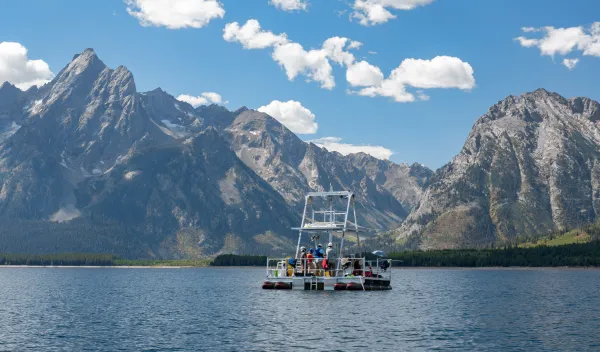
The disappearing mountains and hungry volcano
Once upon a time, the Teton Range, a 40-mile-long mountain range in the northern Rocky Mountains, may have extended much longer than it does now.
A U.S. National Science Foundation-funded team thinks it might know what happened to it. The team, led by University of Kentucky professors Ryan Thigpen and Mike McGlue, along with Ed Woolery, Summer Brown and Kevin Yeager, is testing a hypothesis that the Yellowstone volcano swallowed the Teton Range; more specifically, that the northern half of the range collapsed into the Yellowstone caldera following the Huckleberry Ridge eruption over 2 million years ago.
The Yellowstone volcano is a hotspot, which means the volcano formed when the North American tectonic plate moved over a particularly hot region in Earth's mantle. "While the hotspot has sat stationary over time, the overlying plate moves over it like a paper over a flame," says Thigpen. "When the mountains pass over the hotspot, we think it contributes to their collapse."
The dramatic disappearance could fundamentally change the topography, hydrology, biodiversity and the climatic evolution of the entire region.
To test their hypothesis, the researchers are using uplift and fault displacement studies that focus on the longer-term motion of the Teton fault. "By understanding how much the fault has moved, we can understand how long the fault may have been. It's like a crack in a windshield; as the crack accumulates increasing amounts of displacement, the crack gets longer."
